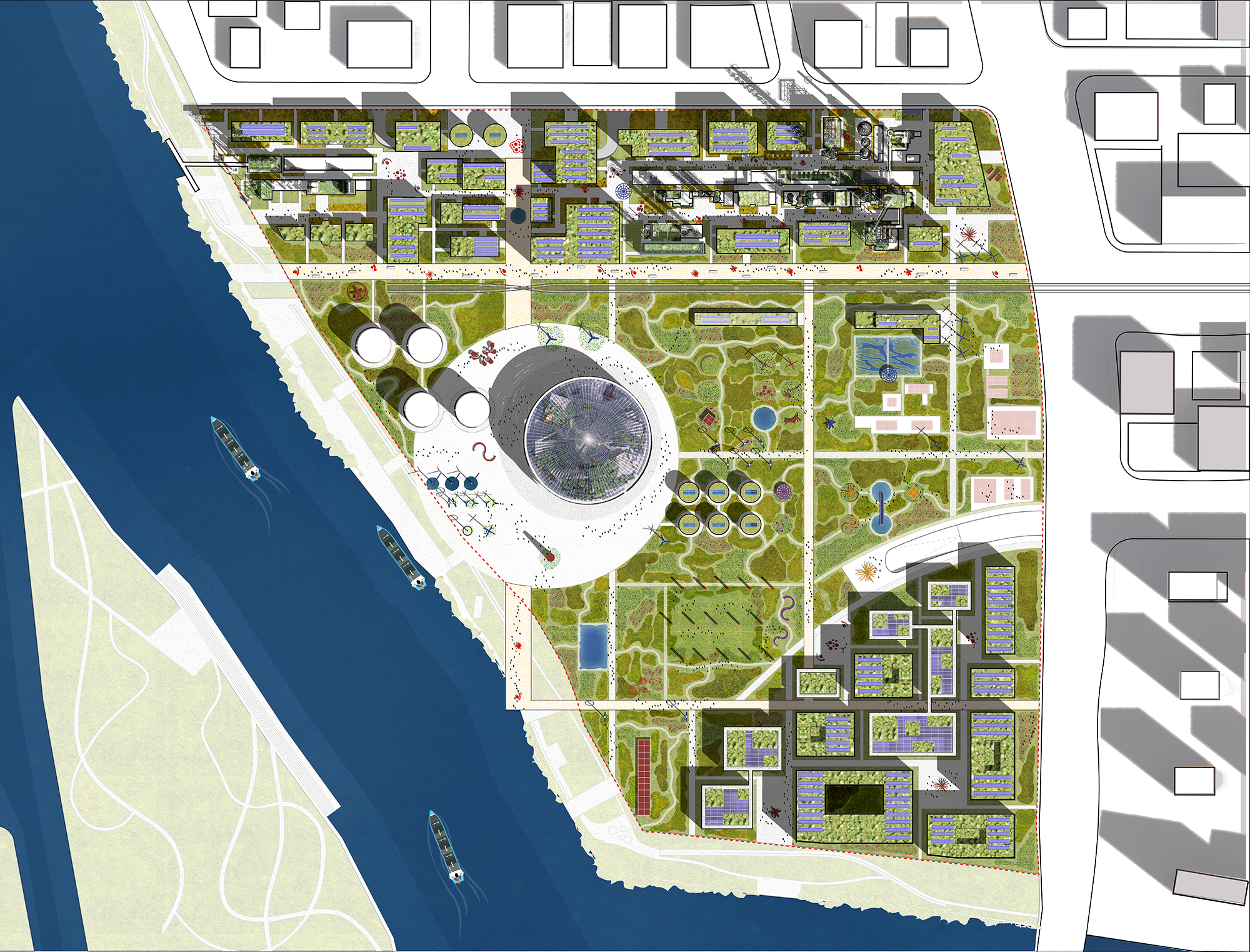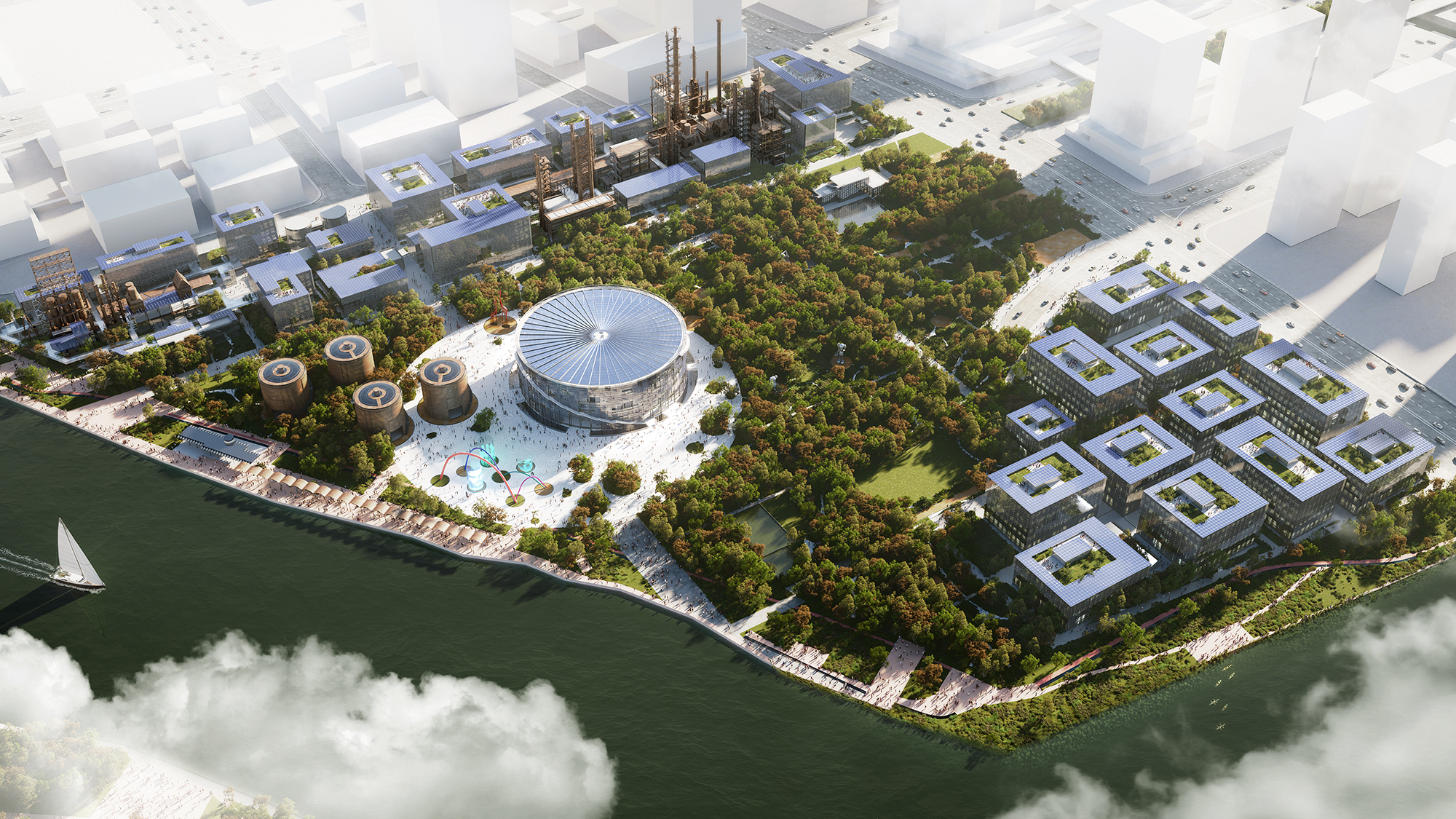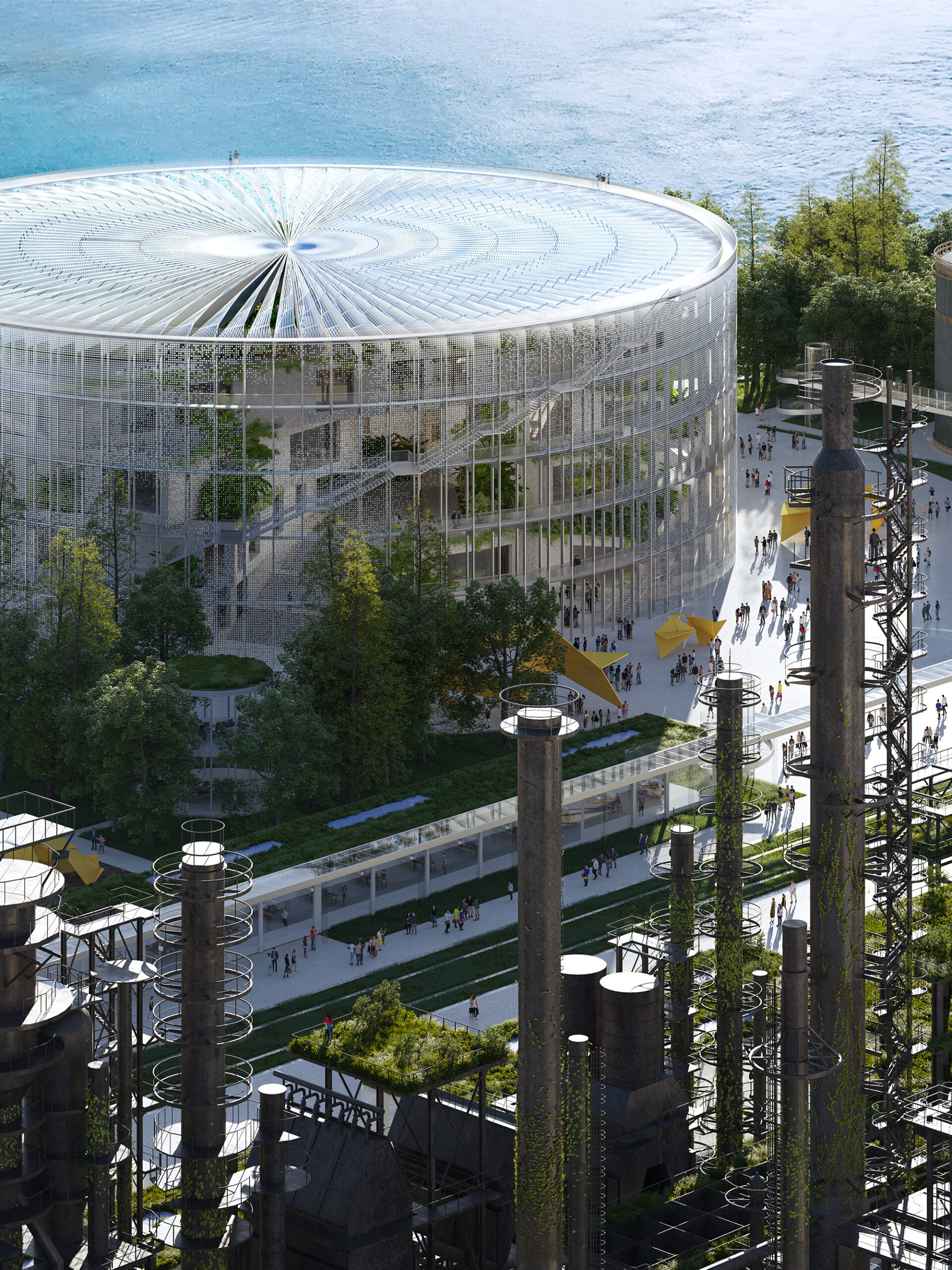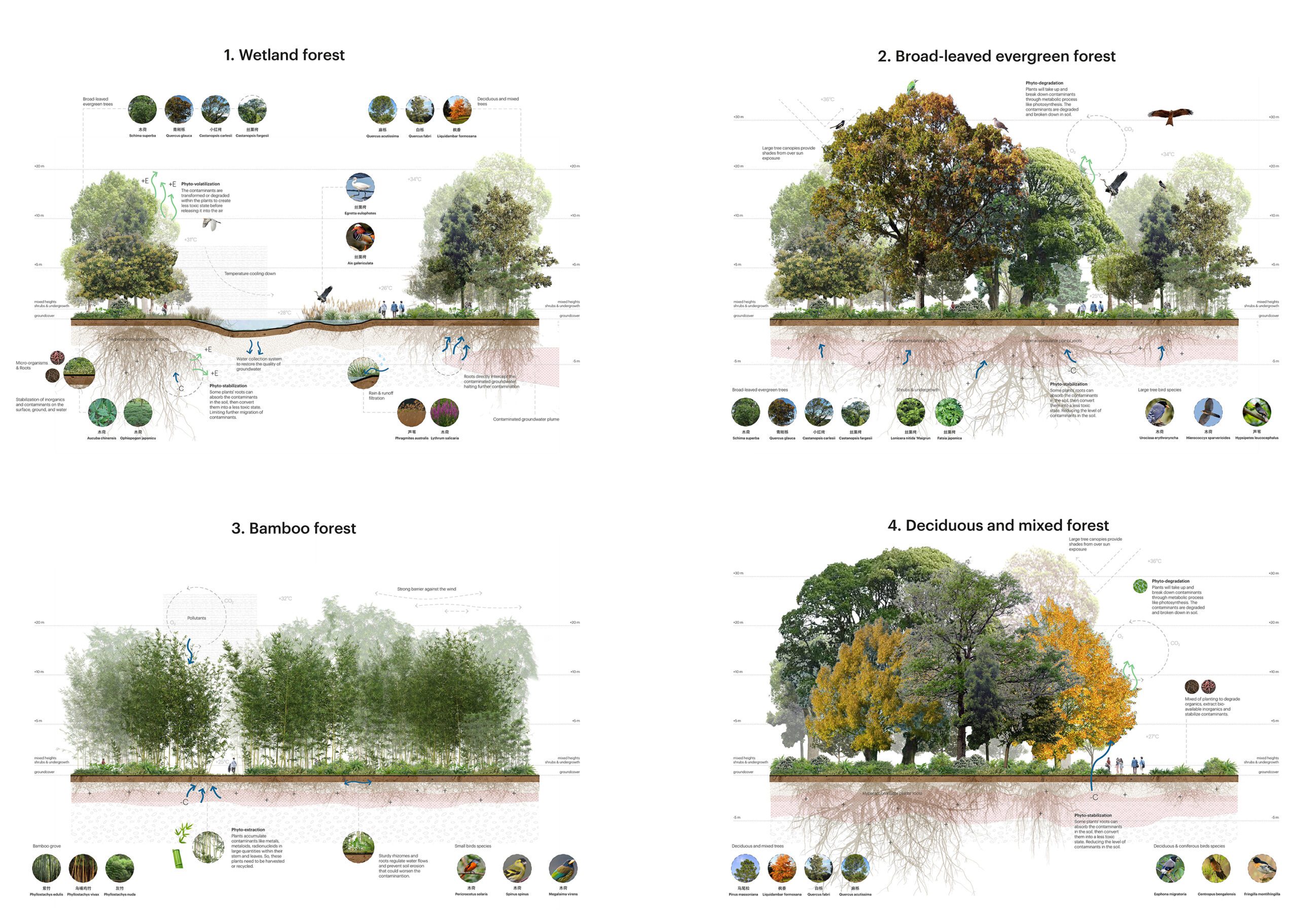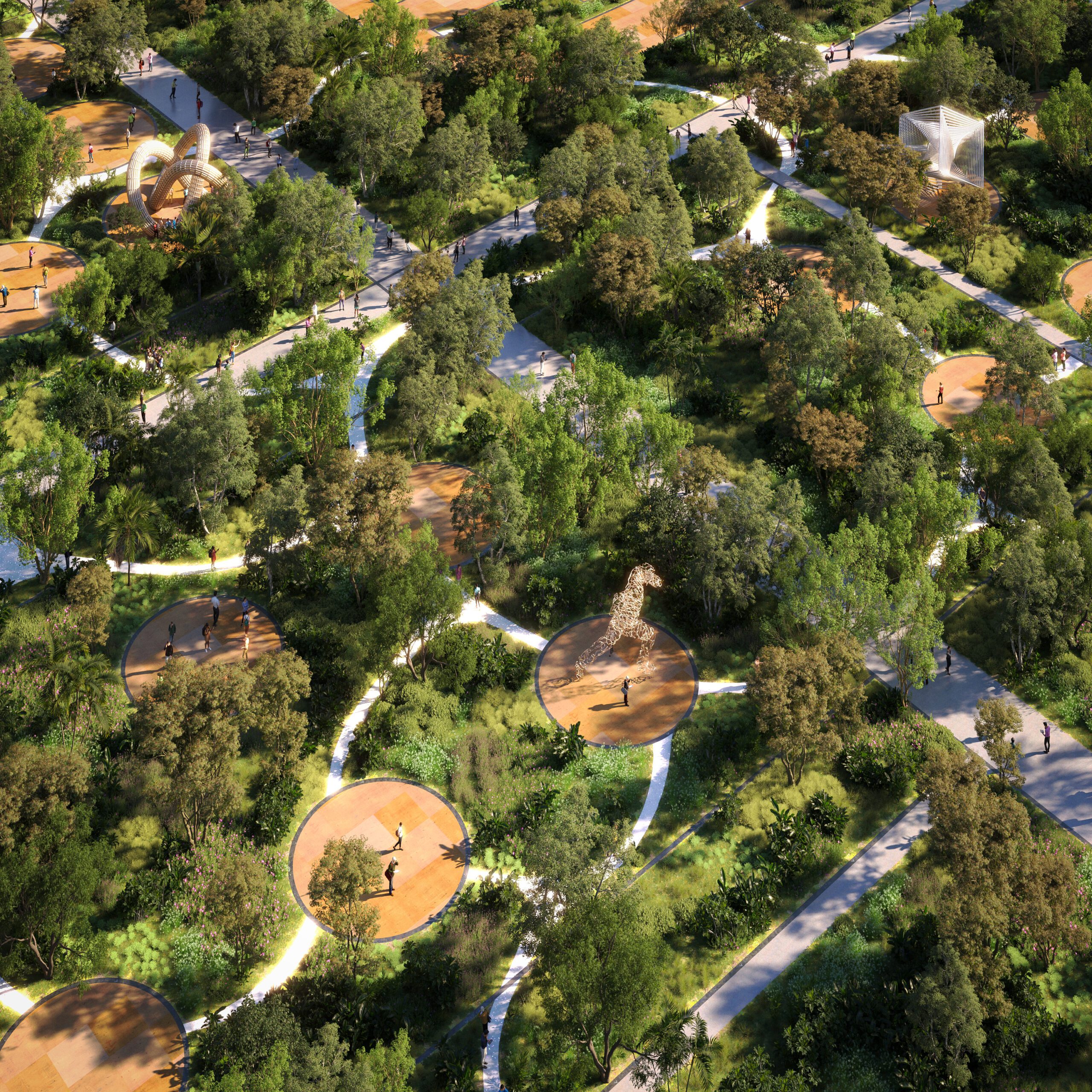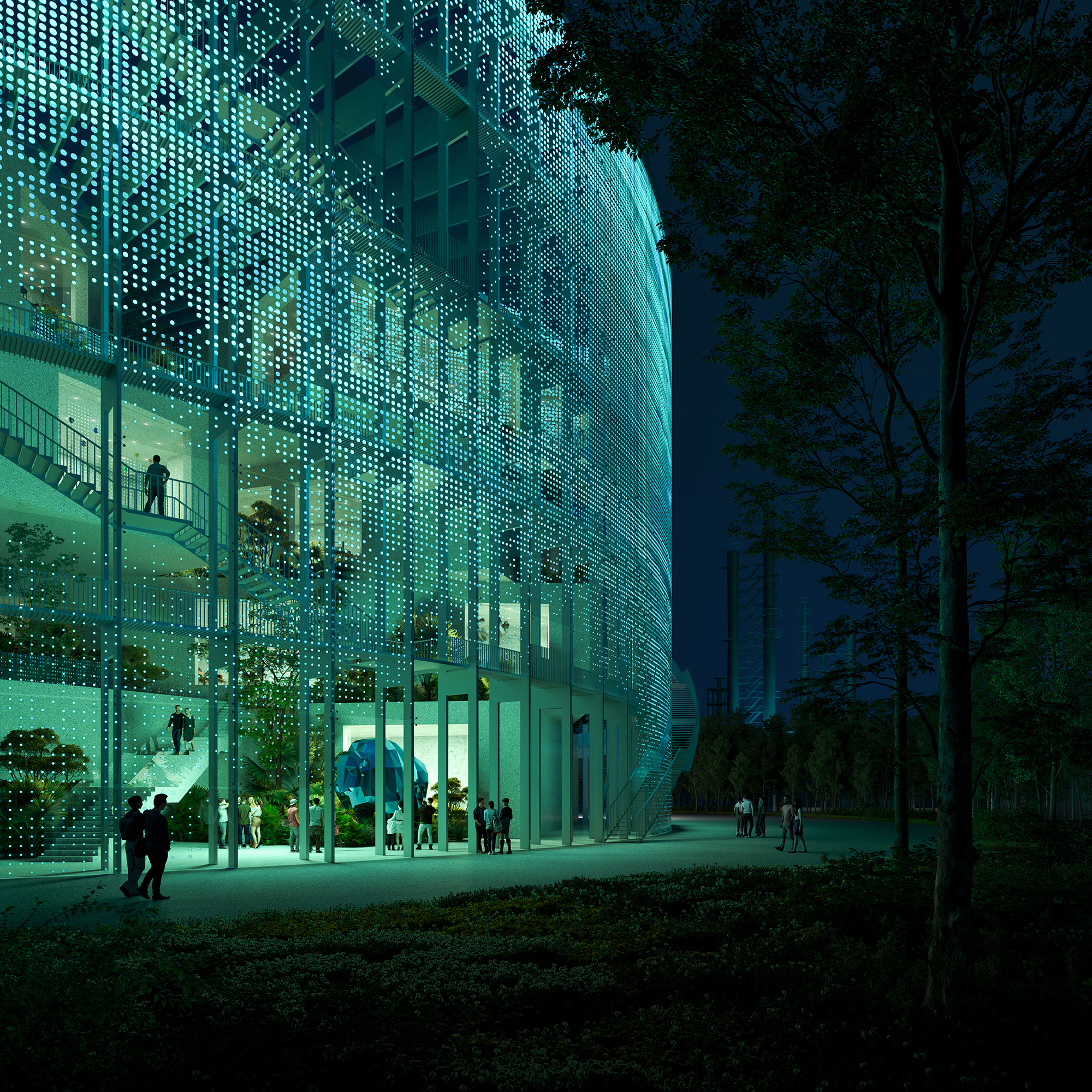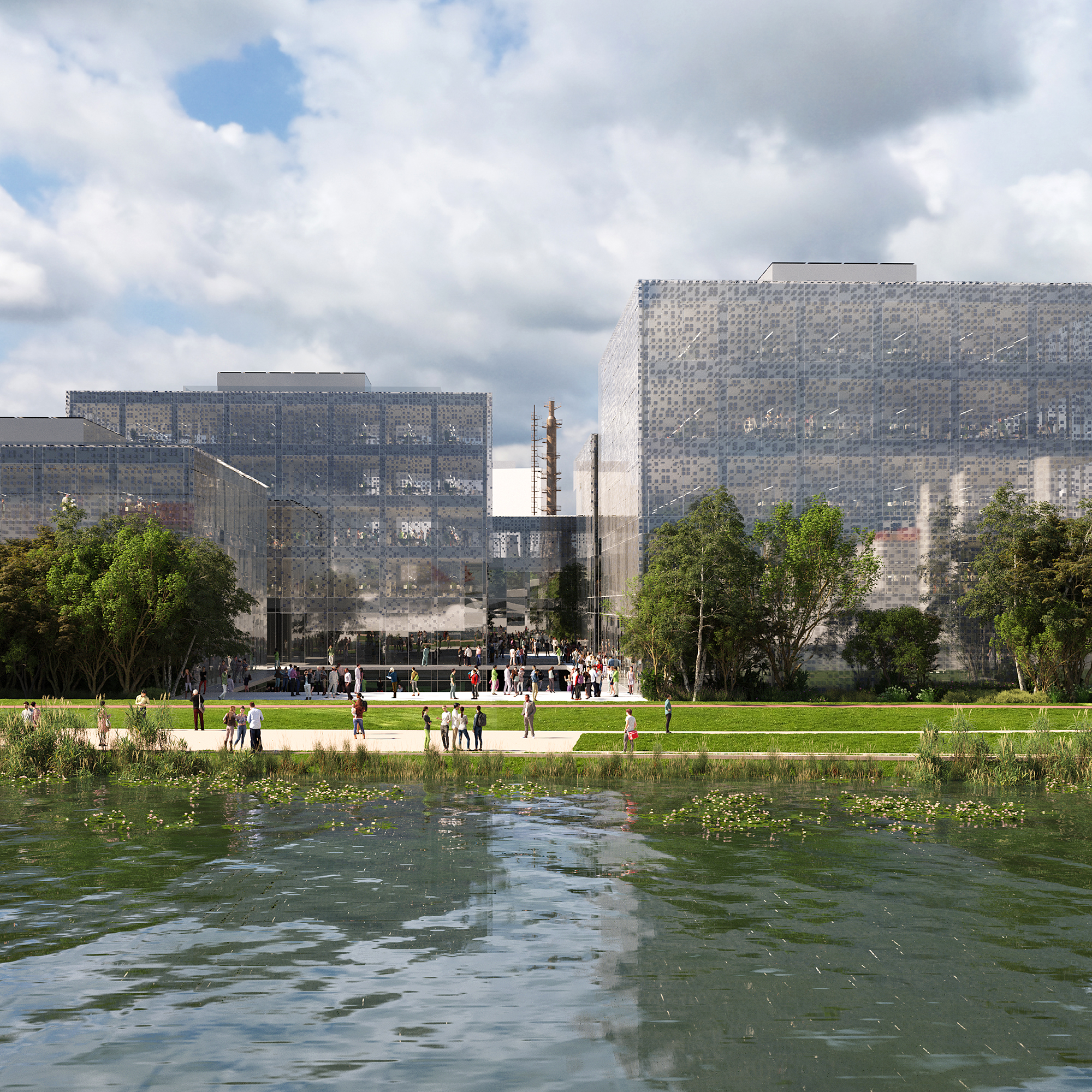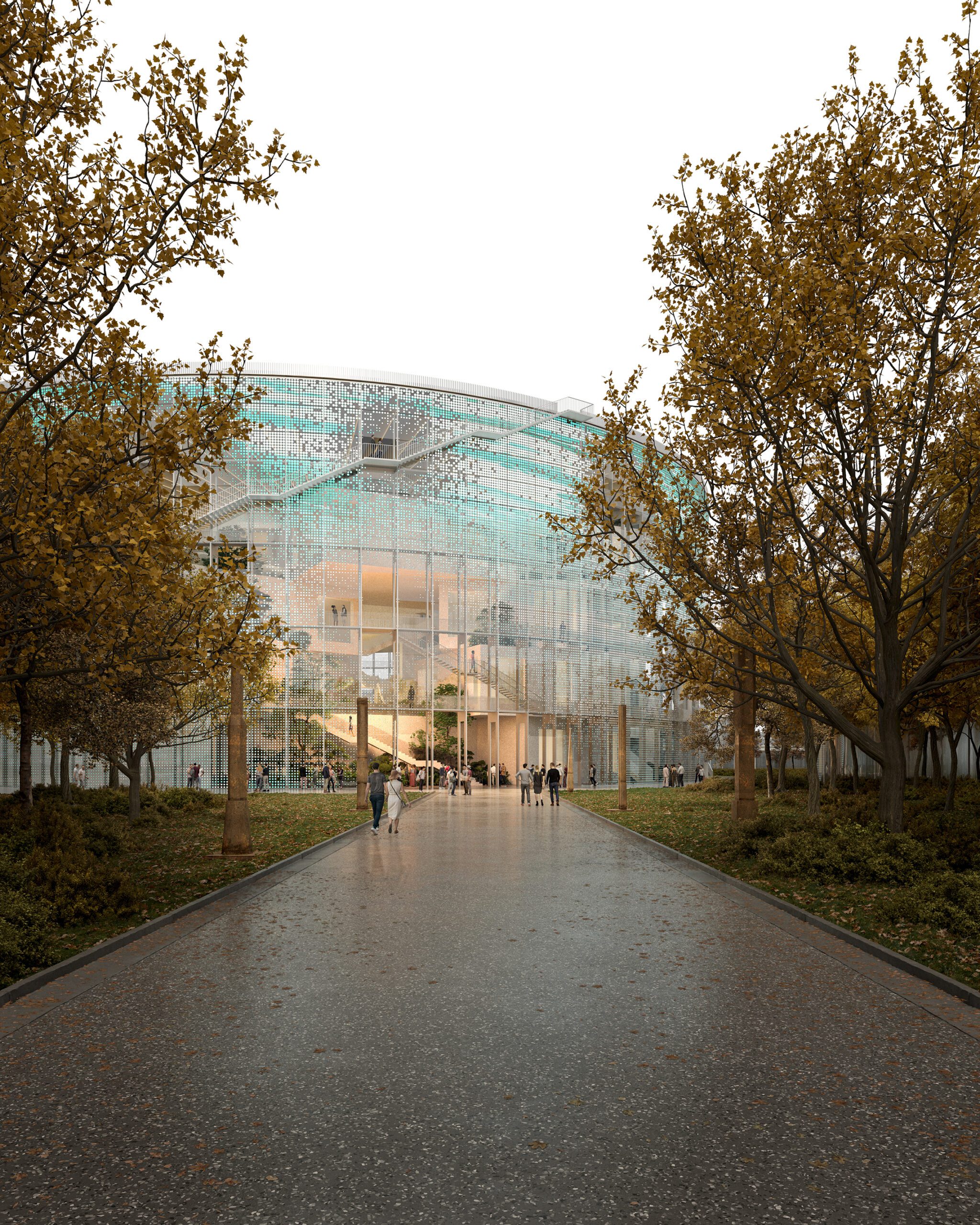Oil Refinery Factory Park
Hangzhou, China
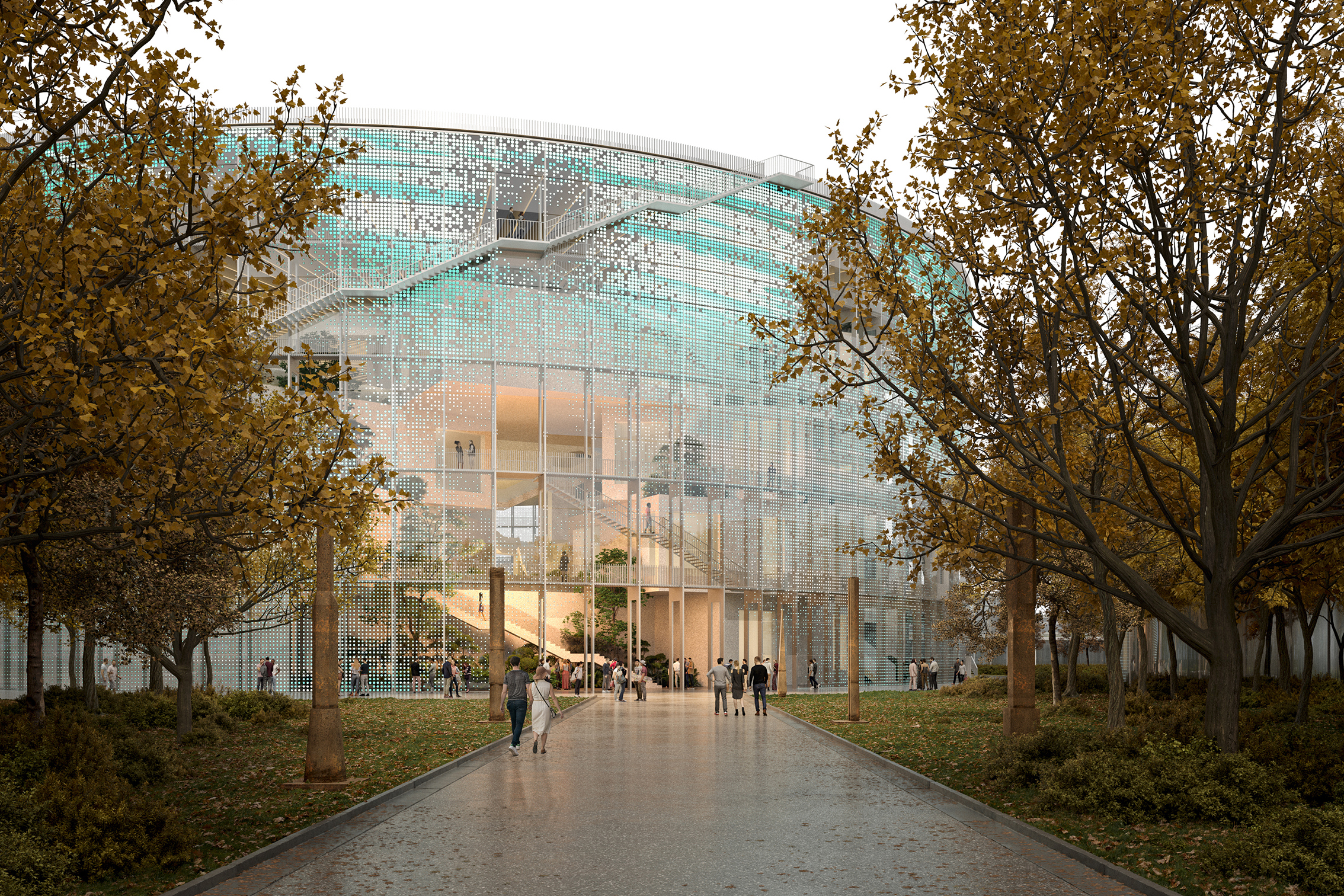
The park integrates old industrial structures and newly built elements, such as MVRDV’s pivotal Art and Sci-tech Centre, reusing all possible traces of the former productive plant and rendering visible and tangible the palimpsestic complexity of the site.
Footprints of disused oil storage and processing facilities become an unprecedented opportunity to generate new spaces while witnessing the industrial past of the area, ultimately emerging as a landscape-based legacy of possible post-oil futures.

The Grand Canal – the world’s longest and one of the oldest man-made waterways – was, in part, constructed to strengthen economic connections between the south and the north of China. Currently, China is taking steps to transform the Grand Canal along its entire length, turning this industrial infrastructure into a social amenity by allowing access to, and enjoyment of, the water to millions of people that live along the canal’s 1,700-kilometre length.
Hangzhou is positioned at the canal’s southern extent, and the roughly 18-hectare site, formerly occupied by an oil refinery, is emblematic of the canal’s history. Today, the factory has closed, and most of the structures that once occupied the site have been demolished, although a number of large refinery buildings and some oil storage drums remain.
With the canal’s future in mind Openfabric design, developed in collaboration with MVRDV, aims to show the potential of industrial-to-cultural landscape transformations. In addition, the design heavily integrates renewable energy sources to serve as a prime example of the transition from fossil fuels to sustainable energy.
The landscape unfolds as a number of forests typologies, where a continuous tree canopy hosts a highly diverse undergrowth distribution pattern. Wetland, broad-leaved evergreen, bamboo, deciduous and mixed are some of the forests’ typologies displayed in the Oil Refinery Factory Park where programmatic opportunity are generated in newly defined forests’ clearings.
Trees distribution is defined as a parametric forest, with criteria such as a species’ contribution to shading the surroundings, food production, or biodiversity algorithmically determining its placement in the park’s forest landscape.
